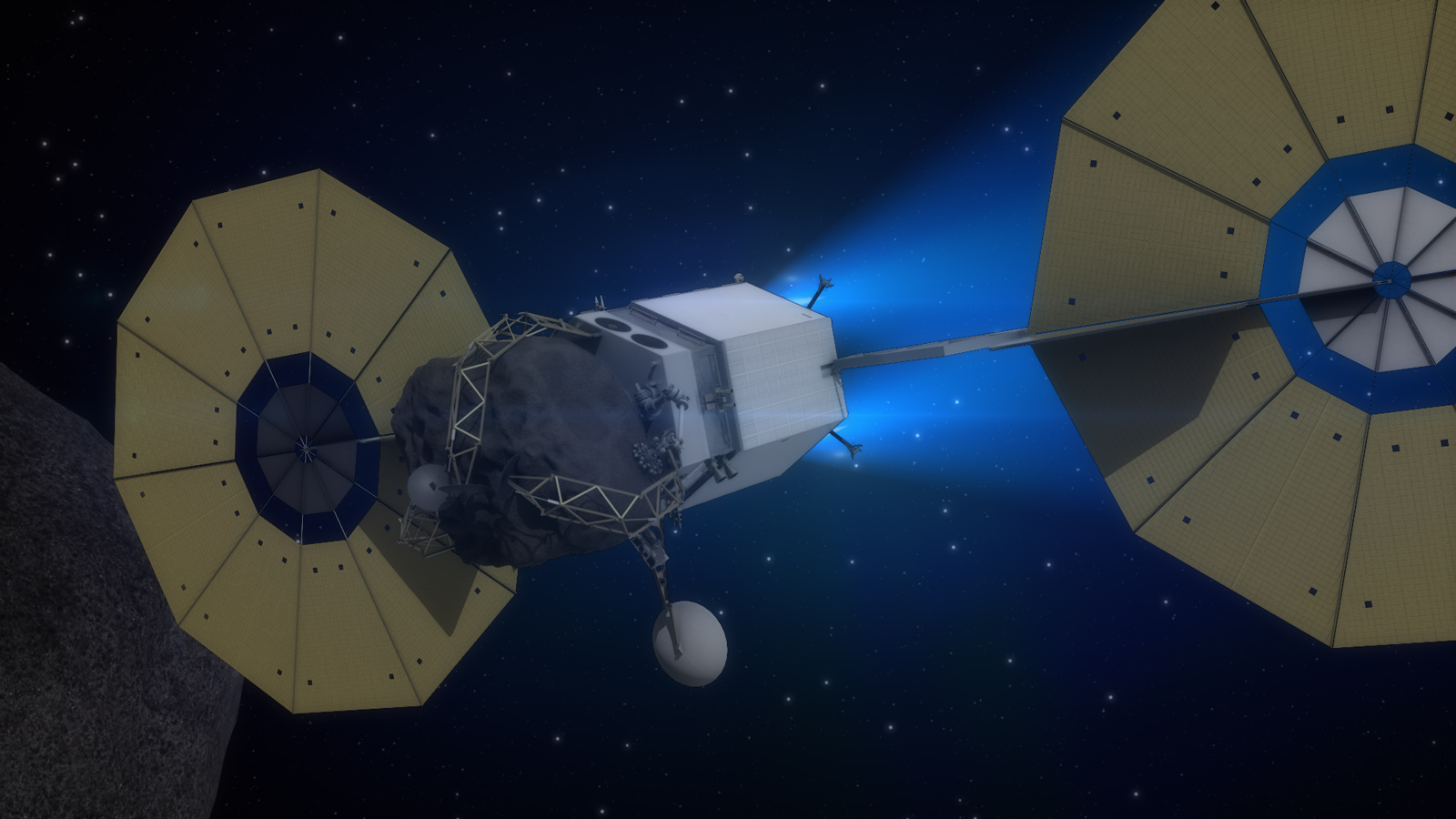Matthew R. Francis for DSM Observer
Nothing is less “deep sea” than an asteroid, yet parallels exist between these two domains, particularly when it comes to resource extraction. Asteroids are debris left over from the formation of the Solar System roughly 4.5 billion years ago. Due to our shared origin, Earth and asteroids contain the same basic materials: water, carbon compounds, metals, and so forth. The “metals and so forth” part has drawn the interest of nations and private companies, since many asteroids are potentially rich in gold, platinum, and rare-earth elements. Astronomers have identified 957,798 asteroids as of December 2019, of which about 10,000 are known to orbit close enough to our planet to be classified as near-Earth objects — with some reachable by spacecraft.
With no biosphere, ecosystem services, or local stakeholders, extracting materials from asteroids carries few of the environmental concerns present in terrestrial or ocean mining on Earth.
Both the deep ocean and outer space are governed by international law, with much of said law constructed during the Cold War. Interested parties often bring a certain Wild West mentality to resource extraction in both instances. However, space law lags behind terrestrial laws on a number of fronts, and recent moves by individual nations and companies should be seen as a wake-up call.
The letter of space law is the 1967 Outer Space Treaty, ratified by 109 nations, including all the current spacefaring countries. Like the earlier Antarctic Treaty, much of the Outer Space Treaty was concerned with preventing the Cold War from spreading. Articles I and II explicitly ban nations from claiming any part of another world as their territory; Article IV forbids nuclear weapons and military bases in space. (This is one reason why many questioned the recent creation of the United States Space Force.) Apollo astronauts planted the United States flag with each Moon landing — a controversial and provocative decision on America’s part — but they also left scientific equipment and brought Moon rocks back without violating the treaty. NASA and the Japan Aerospace Exploration Agency (JAXA) have currently-operating robotic spacecraft taking samples from asteroids for scientific study on Earth.
The Outer Space Treaty is much more ambiguous when it comes to resource extraction. Article II reads in its entirety: “Outer space, including the moon and other celestial bodies, is not subject to national appropriation by claim of sovereignty, by means of use or occupation, or by any other means.” In the absence of explicit language, the United States and Luxembourg have passed laws allowing private companies to develop space prospecting missions.
Some legal scholars, such as Frans von der Dunk of the University of Nebraska-Lincoln and John G. Wrench of the Institute for Justice, have argued that the Outer Space Treaty’s language allows resource extraction. A nation doesn’t need to claim sovereignty to dig for platinum, the argument goes, and the treaty doesn’t mention privately-owned companies at all. The analogy von der Dunk uses is with fishing rights, where no nation has sovereignty over the high seas, but private fishing companies can harvest fish.
Naturally, international law regulates both fishing and mining in international waters, but there’s little regulatory guidance on space mining so far. One notable exception is the Moon Agreement of 1979, which attempted to update the Outer Space Treaty’s language with (among other things) the increased environmental awareness of the 1970s. International law scholar Gbenga Oduntan of the University of Kent has argued that this treaty forbids any commercial exploitation of other worlds until the nations of the world agree on how it should be done. Much like the UN Convention on the Law of the Sea, the United States has not signed the Moon Agreement but by custom it adheres to the treaty — at least until Donald Trump’s recent executive order, which explicitly rejects the idea that such agreements are binding to the USA.
In any case, the disagreements between law experts show that clearer language and regulations should be in order. The time for such agreements is now, too, because — despite optimism from the Trump administration and private companies — we’re still years away from actually mining in space.
Because many asteroids are loosely-bound collections of small debris (called “rubble piles”) rather than stratified Earth-like solid chunks, we don’t currently have the technology to extract valuable minerals from them yet. Even if we knew how to get platinum or rare earths out, the expense of getting them back to Earth is likely to be prohibitive for many years.
“It would be cool if you could start mining platinum asteroids and stop strip-mining Australia,” said asteroid researcher Alessondra Springmann of the University of Arizona. “But it’s more likely we’ll be using water to have a more sustainable robotic or human presence in space. Everything you’re thinking about using on the asteroid is probably going to be at or near the surface.”
The time for a clear international framework for asteroid mining is before the technology is ready. The Outer Space Treaty and Moon Agreement were intended to keep outer space free for scientific exploration by all nations. Nobody has tested these treaties with respect to resource extraction, but it’s only a matter of time, and the world needs to take action rather than simply react to decisions made by one country or company.
Featured Image: Mock-up of the Asteroid Redirect Vehicle, part of NASA’s Asteroid Initiative concept, is shown traveling to lunar orbit using its solar electric propulsion system in this artist’s concept. Image credit: NASA
